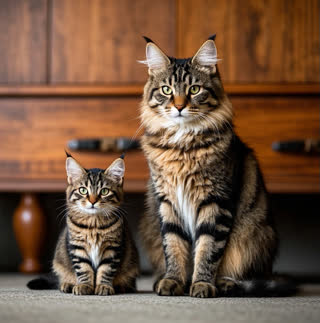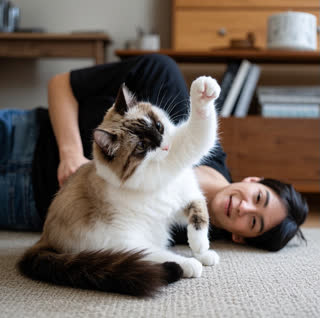Understanding Loneliness in Cats
10 Signs Your Cat Is Lonely
1. Excessive Vocalization
Interactive Play: Schedule daily play sessions with feather wands or laser pointers to redirect their energy.
Puzzle Feeders: Use treat-dispensing toys to keep them mentally engaged.
2. Withdrawn Behavior
Create Safe Spaces: Provide cozy beds and window perches to help them feel secure.
Slow Reintroduction: Gradually engage them with gentle petting or quiet play.
3. Destructive Behavior
Scratching Posts: Offer vertical scratchers to redirect their urges.
Enrichment Toys: Rotate puzzle toys to keep them mentally stimulated.
4. Changes in Appetite
Mealtime Bonding: Feed your cat by hand or sit with them during meals.
Vet Check: Rule out medical issues before attributing changes to loneliness.
5. Litter Box Issues
Clean and Accessible Boxes: Keep litter boxes spotless and in low-traffic areas.
Companionship: Spend time near the box to reassure them.
6. Over-Grooming or Self-Neglect
Grooming Sessions: Brush them regularly to reduce anxiety and strengthen your bond.
Calming Products: Use pheromone sprays or diffusers to ease stress.
7. Clinginess
Predictable Routine: Stick to feeding and playtimes to create stability.
Comfort Items: Leave a worn sweater or blanket with your scent when you’re away.
8. Lack of Social Interaction
Gradual Engagement: Start with short play sessions and build up over time.
Feline Companionship: Consider adopting a second cat if your lifestyle allows.
9. Boredom-Induced Restlessness
Environmental Enrichment: Add climbing trees, bird feeders outside windows, or catnip puzzles.
Cat TV: Play nature videos designed for feline entertainment.
10. Changes in Sleep Patterns
Daytime Activity: Encourage play during daylight hours to tire them out.
Nighttime Routine: Wind down with gentle petting before bed.
How to Prevent Loneliness in Cats
- Consistent Interaction:
Dedicate 10–15 minutes daily to interactive play or cuddling.
Use toys that mimic prey to satisfy their hunting instincts.
- Environmental Enrichment:
Rotate toys to prevent boredom.
Install shelves or perches for climbing and exploration.
- Consider a Companion:
If you’re away often, a second cat can provide companionship. Introduce them slowly to avoid stress.
- Pet Sitters or Daycare:
For extended absences, hire a sitter to check on your cat or consider cat daycare.
- Calming Techniques:
Use calming music or pheromone products to reduce anxiety.










